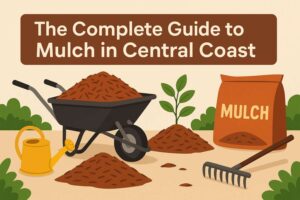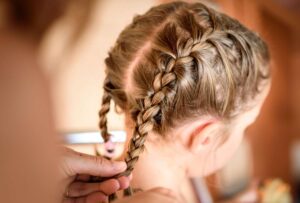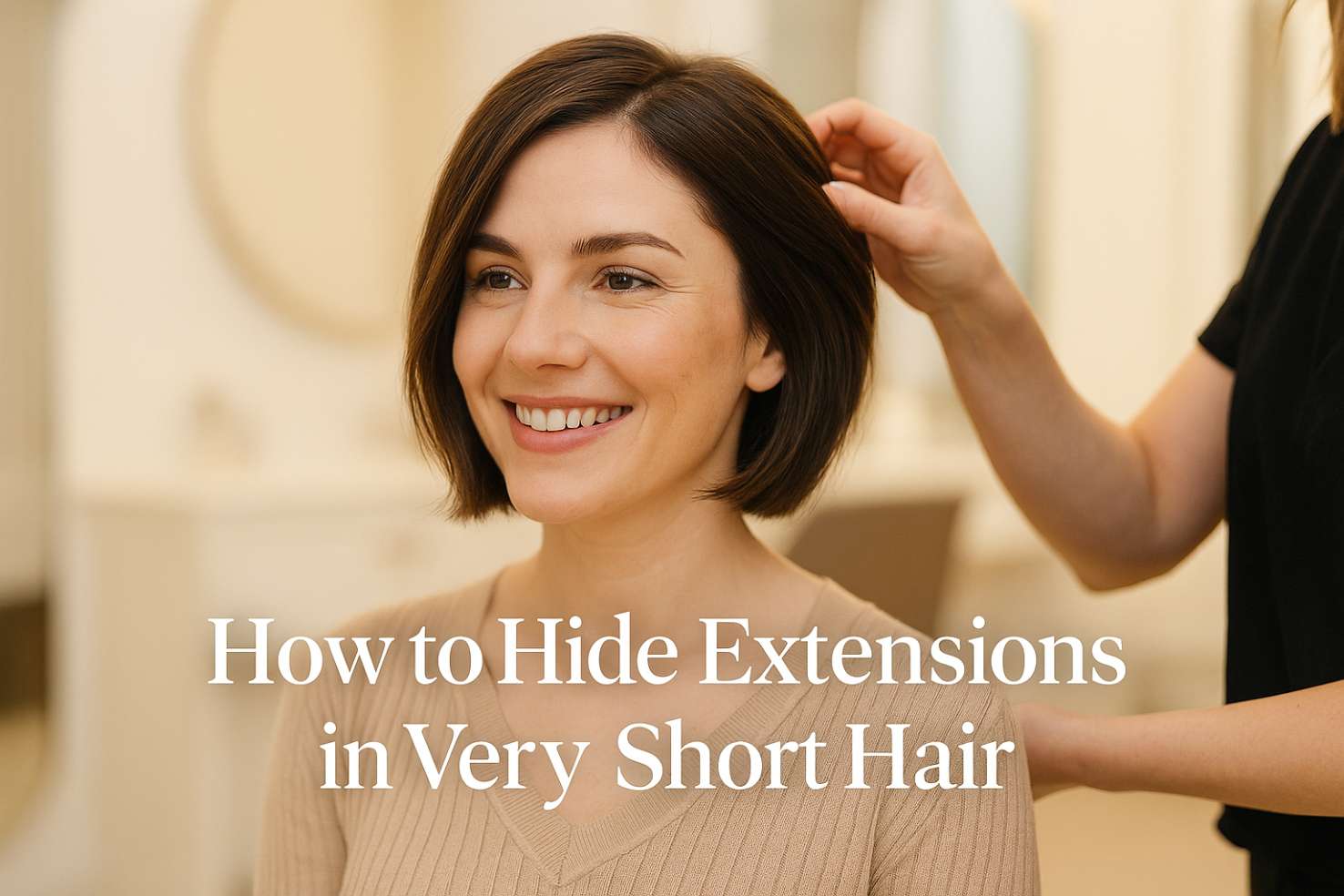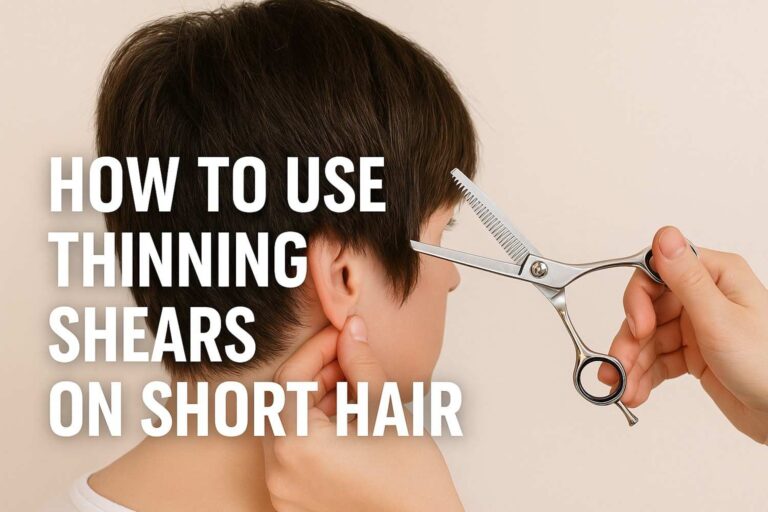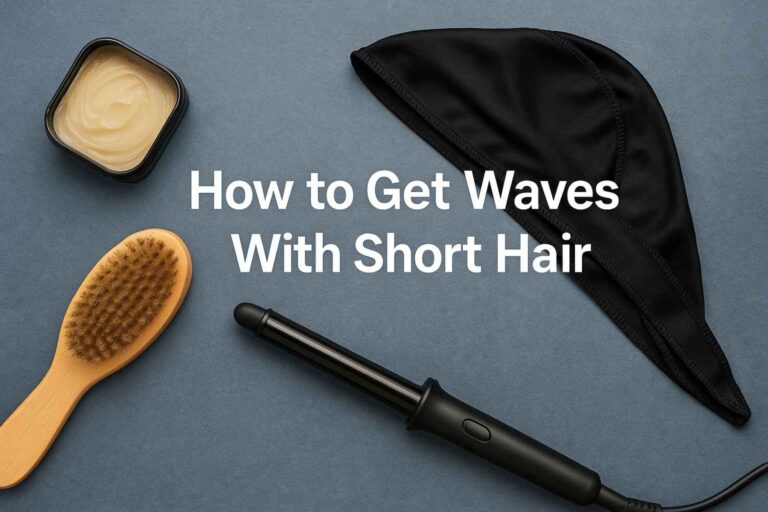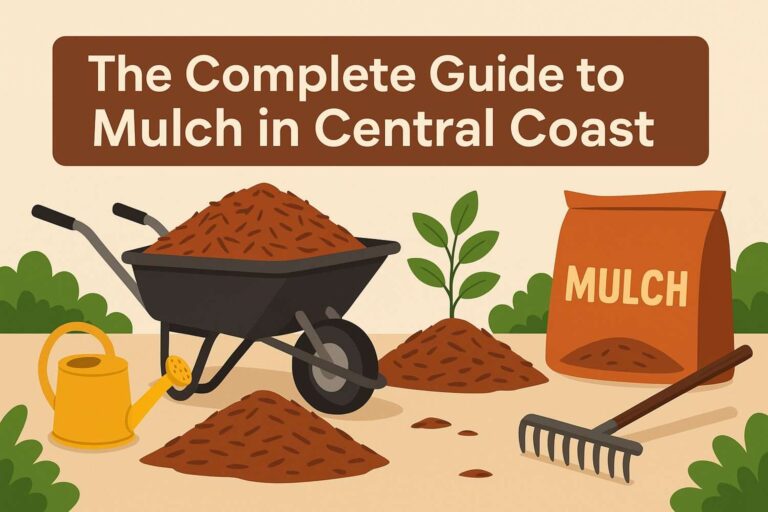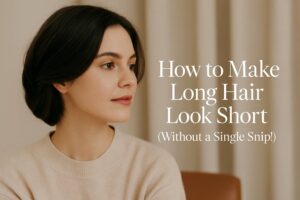My Short Hair Secret: How I Learned to Hide Extensions Like a Pro
I still remember the first time I tried to put in extensions with my short bob. It was a disaster. The clips peeked out every time I tucked my hair behind my ear, and my best friend kept asking, “Did you cut your hair… or glue something on?”
That’s when I realized that learning how to hide extensions in very short hair is an art—and once you master it, no one will ever know your secret.
Over the years, I’ve experimented with every type of extension imaginable—tape-ins, clip-ins, micro-links—and finally found the tricks that make them look effortless and natural, even when your hair barely grazes your chin. If your short hair makes you wonder whether extensions are even possible, I promise you—it absolutely is.
What Type of Extensions Work Best for Very Short Hair?
Choosing the right type of extensions is the first step to achieving a seamless blend. Not every method suits very short hair, especially if you have only 3–4 inches of length. I’ve tested almost everything, and here’s what works best:
Tape-in extensions are my personal favorite. They’re thin, flexible, and lie flat against the scalp. Because they use adhesive tabs, they stay secure and are super easy to conceal under short layers. As long as your hair is at least three inches long, tape-ins can create believable length and volume in just an hour.
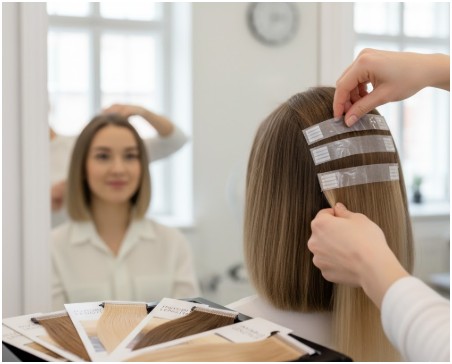
Micro-link extensions come next on my list. These tiny beads attach to small sections of your hair without glue or heat. If your hair is a bit thicker and can hold the beads well, this method looks incredibly natural. Plus, they move like real hair, which helps with blending.
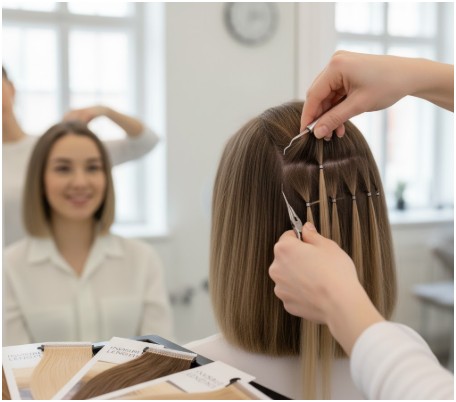
Clip-in extensions are great for a temporary glow-up. If you’re going out for a special occasion or just experimenting, clip-ins can give instant fullness.
The trick? Pick lightweight wefts with small clips and avoid anything bulky. I sometimes use a “fill-in” set just to add volume around the sides instead of full-length extensions.
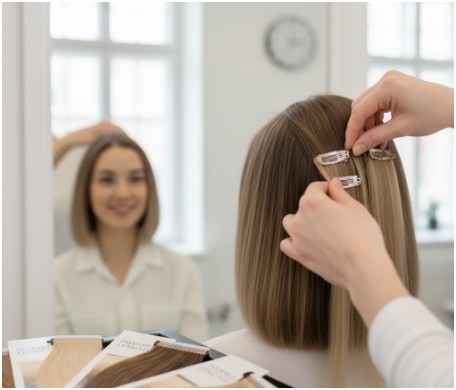
Here’s a quick look at how these compare:
| Type | Best For | Blending Level | Maintenance |
| Tape-ins | Fine or short hair | Excellent | Medium |
| Micro-links | Medium to thick hair | Very natural | Medium to high |
| Clip-ins | Occasional use | Good | Low |
How Do You Prepare Short Hair for a Seamless Extension Blend?
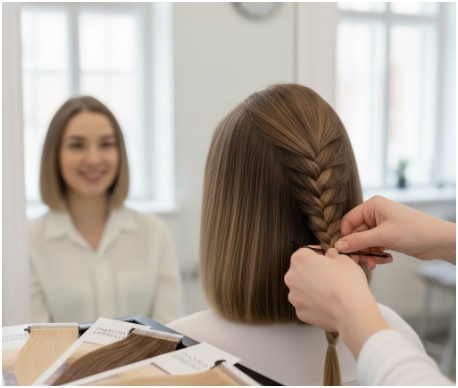
When your hair is short, prep is everything. Before I even touch my extensions, I make sure my natural hair is ready to blend.
If you have thick or blunt-cut hair, braid the bottom layer at the nape of your neck and pin it flat with bobby pins. This trick creates a smooth, even base for your lowest extensions, keeping them hidden and comfortable.
Next, I add texture. Short hair tends to have sharp ends that can give extensions away, so I lightly curl or wave both my hair and the extensions before blending. It’s amazing how a bit of texture hides uneven lines and gives the illusion of one continuous flow.
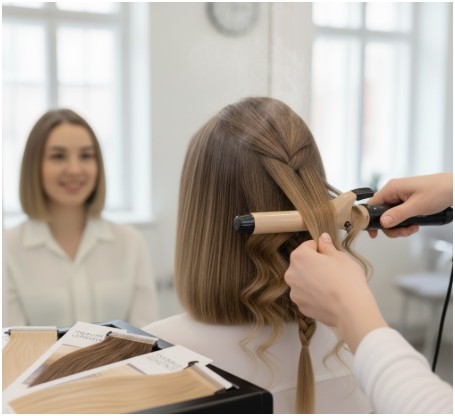
Lastly, I always make sure the color and texture match perfectly. Some extension brands offer free color-matching services, which can be a game changer if you’re buying online. I learned the hard way that even a half-shade difference can look off under sunlight.
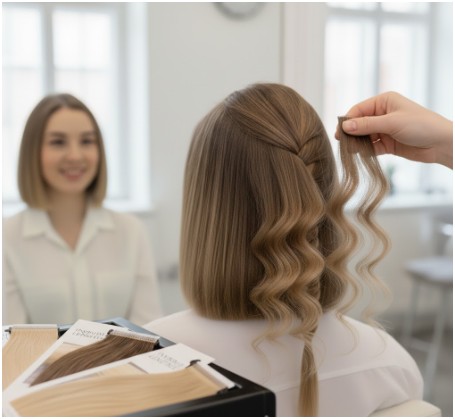
How Should You Apply Extensions on Very Short Hair?
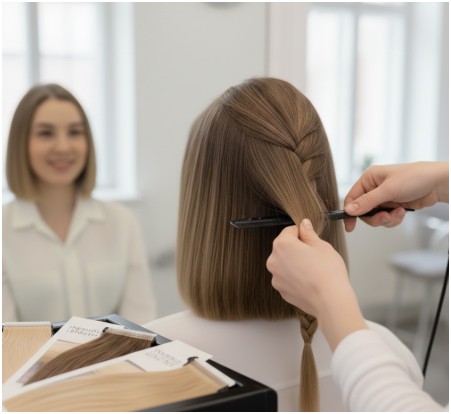
Application is where the magic happens. If you’ve ever struggled with visible wefts, this is the part you’ll love.
I always start at the nape of my neck, applying the first extensions in the lowest section. This way, they’re buried under layers of natural hair.
Then I move upward, placing each weft slightly higher while leaving enough natural hair between layers to cover the seams.
Avoid putting extensions too close to your crown or hairline. Those areas are thinner, and any visible bond or clip will be impossible to hide.
If you’re using clip-ins, teasing the roots helps a lot. I gently backcomb where I plan to clip them in, creating a small cushion that holds the clips and hides them from view.
I’ve found that working slowly and layering gradually makes a huge difference. It’s like painting—you start at the bottom and build dimension. By the time I reach the top, everything looks lush and full without looking fake.
How Can You Blend and Style Extensions for a Natural Look?
Once the extensions are in, blending is where you turn “extensions” into “my hair looks amazing.”
I take my set straight to my stylist for a custom trim and layering session. She cuts the extensions to match the natural shape of my haircut. This step is crucial—if the extensions are longer and blunt at the ends, they’ll stand out immediately.
When styling, I treat my extensions like my own hair. Curling both together—one strand of real hair and one of extension—creates a soft, blended curl pattern. It’s one of my favorite tricks to make the transition invisible.
For finishing touches, I use smaller wefts around my face for soft, face-framing pieces. Then, I spray a bit of dry shampoo or volumizing spray at the crown to lift the roots.
That subtle lift conceals any attachment points near the top and makes my short hair blend beautifully.
When Should You Ask a Professional for Help?
If your hair is extremely short (under 3 inches) or very fine, it’s best to see a stylist. Professionals have the precision and tools to place extensions perfectly, and they can recommend a method that won’t damage fragile hair.
A good stylist will:
- Choose the right method for your hair type.
- Apply extensions in strategic areas for balance and concealment.
- Trim and blend the extensions into your haircut.
Honestly, my first successful experience came after I stopped doing it myself and booked a salon appointment. The difference in how natural it looked was night and day.
FAQs About How to Hide Extensions in Very Short Hair
1. Can I wear extensions if my hair is only 3 inches long?
Yes! You can. Tape-ins and micro-links are your best options for hair that short. They lay flat and attach securely to short strands. You just need enough hair to cover the bonds, usually about three inches.
2. How do I stop extensions from showing when my hair moves?
Start by avoiding top placement. Always work from the bottom up, and leave a generous section of your natural hair on top to act as a cover. Teasing the roots before applying clip-ins also helps keep them hidden.
3. Can I use heat tools on my extensions?
If your extensions are made from 100% human hair, yes—you can style them like your natural hair. Just remember to use heat protectant spray. Synthetic extensions, however, can melt or frizz under high heat, so check the label.
4. How often should I replace or move up my extensions?
For tape-ins, every 6–8 weeks is ideal since your natural hair growth can push them down. Micro-links can last 2–3 months with proper care. Clip-ins, being temporary, can last over a year if stored and cleaned properly.
My Secret Weapon: Confidence and the Right Angle
At the end of the day, knowing how to hide extensions in very short hair isn’t just about tricks and tools—it’s about confidence. When you feel good, you naturally carry yourself differently.
I still remember catching my reflection after my first successful blend. My hair looked fuller, softer, and so natural that even my hairstylist did a double take. That’s when I realized extensions aren’t just about length—they’re about expression.
So go ahead and play. Experiment. Whether it’s tape-ins for a date night or clip-ins for a weekend getaway, you deserve to love how your hair looks and feels.
Pro tip: Always run your fingers through your hair once you’re done styling. If you can’t feel where the extensions start, no one else will either.

